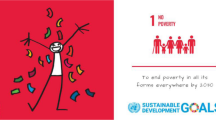Abstract
The success of the entire Uruguay Round of the GATT depends considerably upon the success of the negotiations on the liberalization of world trade in textiles and clothing, since a number of developing countries have made their support for progress in the negotiations on services or safeguards contingent upon progress in this field. What are the present controversies? And what are the chances of resolving them in time?
Similar content being viewed by others
References
Cf. Financial Times of 4. 7. 1990, p. 4.
See Gesamttextil: Distortions of Competition in World Textile Trade, Volume 7, in: K. Neundörfer, E.-H. Stahr (eds.): Publications on Textile Policy, Volume 7, Frankfurt 1989. For further literature on the topic covered in this article see also L. Gass. K. Neundörfer, E.-H. Stahr: Forward Strategy for World Textile Trade, Volume 8, in: ibid, K. Neundörfer, E.-H. Stahr, Frankfurt 1990, as well as K. Neundörfer: The Multi-Fibre Arrangement, in: ibid, K. Neundörfer, E.-H. Stahr, Frankfurt 1987.
Author information
Authors and Affiliations
Rights and permissions
About this article
Cite this article
Neundörfer, K. Textiles and clothing in the Uruguay Round: Current situation and future perspectives. Intereconomics 25, 171–175 (1990). https://doi.org/10.1007/BF02926166
Issue Date:
DOI: https://doi.org/10.1007/BF02926166




